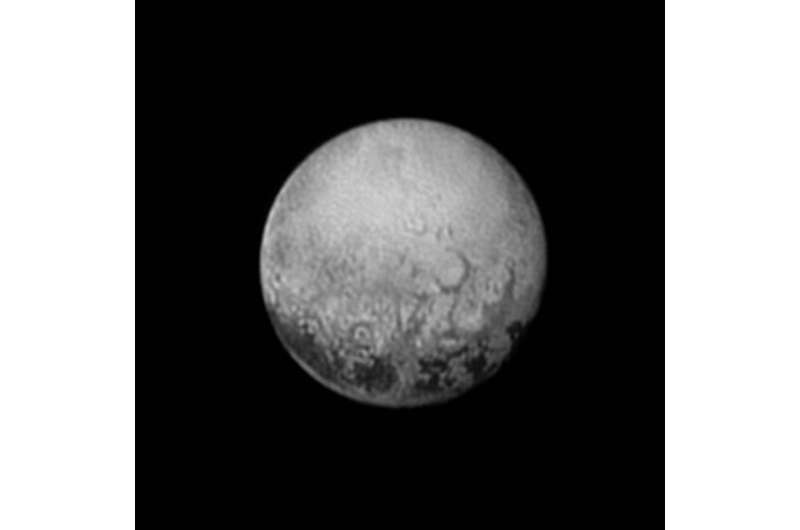New Horizons' last look at Pluto's Charon-facing hemisphere reveals intriguing geologic details that are of keen interest to mission scientists. This image, taken early the morning of July 11, 2015, shows newly-resolved linear features above the equatorial region that intersect, suggestive of polygonal shapes. This image was captured when the spacecraft was 2.5 million miles (4 million kilometers) from Pluto. Credit: NASA/JHUAPL/SWRI
The closer the New Horizons spacecraft gets to Pluto, the more puzzling the dwarf planet becomes.
The latest image released by NASA highlights four mysterious dark spots lined up along Pluto's equator. Each of the spots is about 300 miles across, and they are evenly spaced along a dark belt that rings the planet's surface.
When New Horizons spied the spots a few weeks ago, mission scientists were left scratching their heads.
"It's a real puzzle-we don't know what the spots are," Alan Stern, the mission's principal investigator, said at the time.
They still don't. The new images, taken by New Horizons from about 2.5 million miles away, reveal that the boundaries of the circles aren't sharp but irregular. This could be a sign that whatever process created the dark areas was more complicated than scientists first thought.
"We can't tell whether they're plateaus or plains, or whether they're brightness variations on a completely smooth surface," Jeff Moore, a member of the New Horizons team based at NASA's Ames Research Center in Mountain View, Calif., said in a statement.
Curt Niebur, the mission's program scientist at NASA headquarters in Washington, said the position of the spots was perplexing too.
"It's weird that they're spaced so regularly," he said in the statement.
Unfortunately, the scientists aren't likely to get answers from Tuesday's historic flyby, which will take place at 3:49 a.m. PDT. The spotted side of the planet will be facing toward the large moon Charon and away from New Horizons as it zooms past at 36,000 mph.
That means this picture is "the last, best look that anyone will have of Pluto's far side for decades to come," Stern said.
©2015 Los Angeles Times
Distributed by Tribune Content Agency, LLC.























